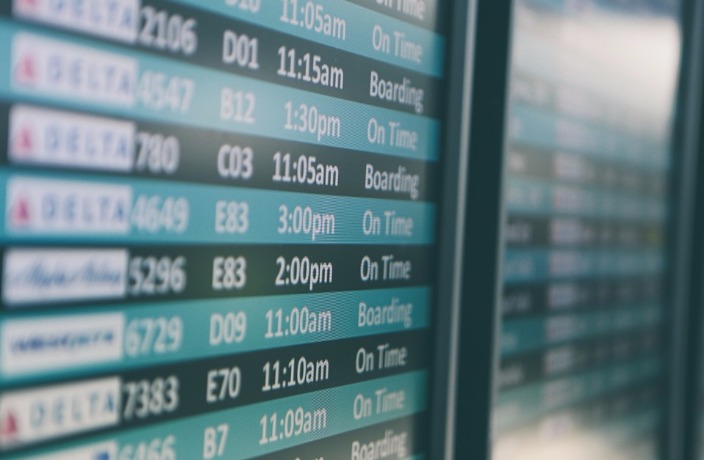On a recent trip to Europe, a short layover at Moscow’s Sheremetyevo Airport revealed telling signs of the growing influence that a new generation of digital-savvy Chinese travelers has on the future of global tourism. As I dashed towards the boarding gate of my connecting flight, I couldn’t help but notice something weirdly familiar about my surroundings. Many of the airport’s duty-free shops all had Chinese signage that proclaimed, “We accept Alipay!” or “Receive a 10 percent discount with UnionPay!” It was as if I’d never left Pudong.
In 2017 alone, Chinese travelers made 130.5 million overseas trips and spent a total of USD115.3 billion during their travels. By 2020, the number of overseas Chinese travelers is expected to reach 200 million. With this upward trend in mind, travel destinations, retailers and lifestyle brands around the world are now rethinking their strategies to win over the hearts and minds (and wallets) of this powerful target group.

ITB China 2018, a travel trade show which attracted 700 exhibitors from 80 countries and 15,000 visitors to the 18,000-square-meter hall at the Shanghai World Expo and Exhibition Center, is a physical manifestation of the global battle for a slice of the lucrative pie that is the Chinese outbound tourism market.
Here, some of the most popular booths belong to the likes of Meituan Travel, Tencent and Ctrip. These ecommerce giants are flexing their technological muscles, and showcasing their product offerings, data analysis abilities, and a deep understanding of the local market to the world. Needless to say, travel and mobile technology are now virtually inseparable, and this notion rings true for Chinese millennial travelers in particular.
“Travel companies who invest in artificial intelligence are investing in the future,” ITB China’s General Manager David Axiotis tells me. “We’re actually already experiencing AI in one way or another during our travels. When you’re checking into a hotel or a flight with a mobile device, [your interactions with] chatbots enable hoteliers and airlines to learn a lot about their customers.”
Chinese tourists made 130.5 million overseas trip in 2017. By 2020, the number of overseas travelers will reach 200 million. (Source: Ctrip, CSLA and China Tourism Academy)
Just how exactly can one tickle the fancy of a ‘mobile-first’ generation that has abandoned cash in favor of Alipay and WeChat Pay, communicates with friends constantly – and almost exclusively – via social media, and arranges their travel bookings directly on the screens of their smartphones? In addition to being digital natives, experts all agree that it’s important to first acknowledge the difference in mentality between Chinese millennials and their parents’ generation.
“I normally travel twice a year, usually a short trip to somewhere close to Shanghai, plus a long-distance trip,” Chen Jinglin, a Shanghai-born 20-something who works at a multimedia company, tells me at a café. Over the past couple of years, the avid traveler has already covered many parts of Europe. In addition to that, she also frequently attends her favorite band’s concerts in various parts of Asia. Just like many in her generation, Chen sees traveling as one of her favorite hobbies, and she has the means to go often.

“Chinese millennials grew up under a relatively stable political climate with massive economic growth. They’re the first generation to have the ability to enjoy a modern luxury lifestyle as an attainable reality, and are much more open to the West,” explains Chloe Reuter, CEO and founder of Reuter Communications.
“There’s a been real shift from the ‘tourists’ mindset to the ‘travelers.’ They are going overseas to look for an experience, are much more sophisticated in their tastes, and often prefer to travel independently.”
Just like when they’re at home, smartphones are a crucial part of any activity they partake in. According to Nielsen’s 2017 Outbound Chinese Tourism and Consumption Trends report, 97 percent of travelers from the Middle Kingdom have a data package handy for navigation purposes and to communicate with friends back home. On her most recent trip to Northern Europe, for instance, Chen used her WeChat Moments as a travelogue of sorts to keep her friends updated on her itinerary and the beautiful sceneries of the region.
“They are always looking for selfie-worthy photo opportunities to share on their WeChat Moments and other social media platforms,” Reuter adds. “Providing plenty of visually compelling activities is an important factor that destinations should consider when targeting the Chinese market.”
Both her and James Hebbert, Managing Director of Hylink Digital Solutions in the UK, stress the importance of starting a dialogue with the Chinese audience before they even set off on their journeys. The most effective way to raise awareness is through the use of KOLs and influencers who this target market follows on various social media platforms.
“A recent study shows that young Chinese consumers are more likely to trust a KOL over official branded websites,” says Hebbert from his London office. “When they travel, Chinese millennials often do a lot of homework and research before their trip starts. They know exactly what they want to buy and are very good at seeking out the best deal and value for money.”

Meanwhile, WeChat’s new CityExperience mini-programs, which are essentially destination guides that have included places like London, Dubai and Sydney so far, also cater to the Chinese millennials’ preference for receiving their news and entertainment content directly from their smartphones.
Even when armed with these powerful tools, navigating through the complex Chinese digital ecosystem isn’t an easy feat. In a rapidly changing environment like China, what’s considered new and innovative now might no longer be enough a few months down the road.
“Chinese travelers’ [reliance on mobile payment] is the one thing that sets them apart from the rest of the world,” says ITB China’s David Axiotis. He stresses the importance for overseas retailers, hotels and other travel service providers to adapt and cater to their preference for digital wallets, not the other way around.
Key findings from Nielsen’s 2017 report echoes his recommendations. Last year, 65 percent of Chinese travelers have used Alipay or WeChat Pay during their overseas trips, compared to just 11 percent of non-Chinese. Though bankcards are still most commonly used when they’re traveling (used by 42 percent of Chinese respondents), the number of mobile payment transactions is quickly catching up to cash.
“Many overseas retailers think that accepting UnionPay is good enough, which might have been true five years ago. When I meet industry people overseas, I can’t over-exaggerate the importance of having mobile payment options available.”
Meanwhile, more than 90 percent of Chinese travelers say they’re likely to consider paying with their phones when given the option, and that it might even increase their desire to spend more.
“Many overseas retailers think that accepting UnionPay is good enough, which might have been true five years ago,” Reuter adds. “When I meet industry people overseas, I can’t over-exaggerate the importance of having mobile payment options available.”
Just before Chinese New Year, London’s luxury department store Harrods made headlines when it began to accept WeChat Pay across its 400 plus terminals in the Knightsbridge flagship location and its airport outlets. That same month, it had also added the Alipay Instant VAT refund function, allowing Chinese shoppers to have their tax refunds deposited directly into their mobile payment account.
While Hebbert sees this as a great example that others can use as a reference, he believes there are still many opportunities for destinations and brands in the West to cater to Chinese travelers, and to facilitate a more seamless journey from creating awareness online among Chinese travelers, bringing them into the stores to experience the brand while they’re visiting, converting the experience into a sale, and developing a long-term relationship with them.

At present, only less than 10 percent of Chinese nationals have a passport, but the number is bound to increase over the next few years. If overseas merchants don’t have a tailored communication strategy and the necessary infrastructure set up to make it easier for Chinese travelers to spend money, serving the 200 million travelers who’ll be coming their way by 2020 will be an overwhelming task.
Back at the ITB China, the fact that Ctrip processes 50TB of data generated by its 300 million users on a daily basis was referenced multiple times during various keynote speeches and discussion panels. China’s largest online travel agency isn’t just setting the benchmark for its domestic competitors, but international players are also keeping a close eye on its development.
According to Ctrip’s Chief Data Officer Wilson Pang, the work of the 3,000 staff members in the Data and Research department is one of the key factors to the company’s success. “The data that we collect when users browse through our website or app is extremely useful to determine not only our user demographics, but also the changes in demand for different destinations, how much people are willing to spend, and more,” explains Pang. “Meanwhile, the actual booking data allow us to provide timely tips during their travels.”
91 percent of Chinese tourists say the availablity of mobile payment might increase their desire to spend and shop. (Source: Nielsen)
During the Labor Day holiday, for instance, based on the spike in hotel occupancy rate in cities like Guiyang, Yangshuo, Fenghuang, Dali and Lijiang, Ctrip was able to make recommendations to their hotel partners and tourist attractions around these areas to ensure these places are properly staffed to handle the influx of guests. Meanwhile, travelers were also offered advice before and during their trip on how to avoid peak periods around these destinations.
And with the growing number of independent travelers in China, Pang says that catering to the diverse needs of this crowd is all about providing variety and the convenience of having everything all in one digital ecosystem, from booking and recommendations, to payment and sharing memories of their travels – something that young people like Chen Jinglin cares deeply about when deciding where to travel.
Back in the café, she is rattling off the names of places that she’d love to visit in the near future. Buenos Aires and several Eastern European capitals are high up on her list.
“When I choose a travel destination, I usually think about how interesting and fun it is, and price isn’t my primary concern,” she explains. “Although I don’t follow travel KOLs closely, I do take their recommendations as a reference, especially the ones that are featured on apps like Ctrip, where I make my travel bookings.”
She concludes, “I don’t have many holidays, so at the end of the day, it’s all about whether the destination is worthwhile for me to invest my time.”






















0 User Comments